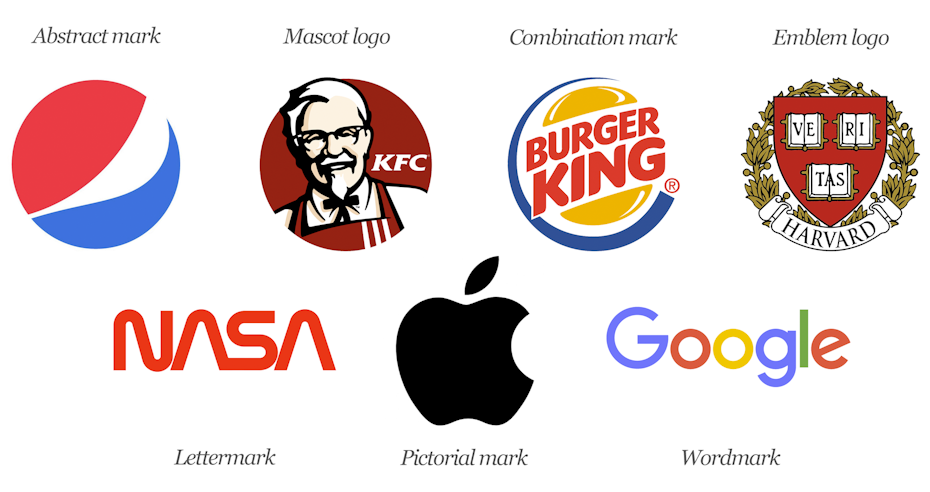From Wordmarks to Mascots: Exploring the Different Types of Logos
Logo design is a critical aspect of brand identity, and it plays a vital role in the success of any business. A logo is a visual representation of a company, and it can communicate a lot about the company’s values, products, and services. A well-designed logo can create a lasting impression on the target audience and can even help a company stand out in a crowded market.
Designing a logo is not an easy task, and it requires a great deal of creativity, research, and expertise. There are many different elements that go into creating an effective logo, including color, typography, shape, and style. Here are some key factors to consider when designing a logo:
- Simplicity: A simple logo is more memorable and easier to recognize than a complex one. A simple design can also be more versatile and adaptable, which is important for branding purposes.
- Color: Colors can have a significant impact on how a logo is perceived. Different colors can evoke different emotions, and it’s essential to choose colors that align with the company’s values and brand personality.
- Typography: The font used in a logo can also affect how it is perceived. A font that is too fancy or difficult to read can detract from the logo’s effectiveness, while a simple and clear font can make the logo more memorable.
- Originality: A logo should be unique and distinctive to stand out from the competition. It’s important to avoid using generic templates or copying other logos.
- Scalability: A logo should be scalable and adaptable to different sizes and formats, from large billboards to small business cards.

In addition to these factors, it’s essential to consider the target audience when designing a logo. A logo for a children’s toy company will look very different from a logo for a law firm, for example. It’s important to research the target audience and understand their preferences and expectations.
Once a logo is designed, it’s important to protect it through trademark registration. Trademark registration can prevent others from using a similar logo, which can help protect the company’s brand identity.
In conclusion, logo design is a critical aspect of brand identity and plays a vital role in the success of any business. A well-designed logo can create a lasting impression on the target audience and help a company stand out in a crowded market. When designing a logo, it’s important to consider factors such as simplicity, color, typography, originality, and scalability, as well as the target audience’s preferences and expectations. With careful planning and execution, a great logo can be a powerful tool for building a strong brand identity.
There are several different types of logos, and each type has its own unique characteristics and uses. Here are some of the most common types of logos:
Wordmark or logotype:
A wordmark or logotype is a logo that consists of the company’s name in a stylized font. This type of logo is effective for companies with short and distinctive names, and it can help to establish brand recognition. Examples of companies with wordmark logos include Coca-Cola, Google, and IBM.
Lettermark:
A lettermark is similar to a wordmark, but it uses the initials or acronym of the company’s name. This type of logo is useful for companies with long names, and it can help to simplify the branding process. Examples of companies with lettermark logos include NASA, IBM, and HBO.

Icon or symbol:
An icon or symbol is a logo that uses a graphic or image to represent the company. This type of logo is useful for companies with recognizable visual elements, and it can help to create a unique and memorable brand identity. Examples of companies with icon or symbol logos include Apple, Nike, and McDonald’s.

Combination mark:
A combination mark is a logo that combines both text and graphics. This type of logo is useful for companies that want to incorporate both their name and a recognizable symbol or graphic. Examples of companies with combination mark logos include Burger King, Lacoste, and Doritos.

Emblem:
An emblem is a logo that uses a graphic or image inside a shape or emblem. This type of logo is useful for companies that want to create a traditional and classic look. Examples of companies with emblem logos include Starbucks, Harley-Davidson, and BMW.

Mascot:
A mascot is a logo that uses a character or animal to represent the company. This type of logo is useful for companies that want to create a friendly and approachable brand identity. Examples of companies with mascot logos include KFC’s Colonel Sanders, Pillsbury’s Doughboy, and Planters’ Mr. Peanut.

Each type of logo has its own unique characteristics and uses, and the choice of logo type will depend on the company’s brand identity, target audience, and overall marketing strategy. Working with a professional logo designer can help to create a logo that effectively represents the company and its values.
